This guide shows you exactly which types of web hosting make sense in 2025—whether you’re launching your first WordPress site, spinning up a portfolio, or running a growing business that can’t afford downtime. You’ll see which providers win in specific use cases and how to pick a plan that matches your traffic, budget, tech comfort, and growth plans.
The Best Web Hosting Companies for 2025
- Hostinger – Best overall
- DreamHost – Best value for shared hosting
- SiteGround – Best for extra speed and security
- Bluehost – Best for new WordPress websites
- Scala Hosting – Best upgrade from shared hosting
- HostGator – Best for simple websites
- WP Engine – Best managed WordPress hosting
Picking the wrong host in 2025 still hurts the same way it always has—slow pages, random downtime, outdated PHP, and support that shrugs at you. A good host quietly keeps your site fast, secure, and online. A bad one quietly kills conversions.
I want hosting I can set up in minutes, manage in one clean dashboard, and then ignore. The best providers run in the background, keep backups current, and only surface when you need help.
Pricing is still a major factor. After working with thousands of site owners, the pattern is obvious—most people want the most reliability they can get without paying for data centers they don’t need yet. This list leans toward plans that balance performance, support, and real-world affordability.
So whether you’re putting your very first site online or building a portfolio of niche sites, the hosts below can take you from setup to launch to growth without forcing you to re-platform too early.
The Top 7 Best Web Hosts for 2025
- Hostinger – Best overall
- DreamHost – Best value for shared hosting
- SiteGround – Best for extra speed and security
- Bluehost – Best for new WordPress websites
- Scala Hosting – Best upgrade from shared hosting
- HostGator – Best for simple websites
- WP Engine – Best managed WordPress hosting
Every one of these companies can host a serious site in 2025. The difference is in their strengths—some are friendlier for first-time WordPress users, some give you more speed and security out of the box, and some make scaling from shared to cloud as painless as possible.
Let’s look at what each host actually does best right now—and which situations they fit.
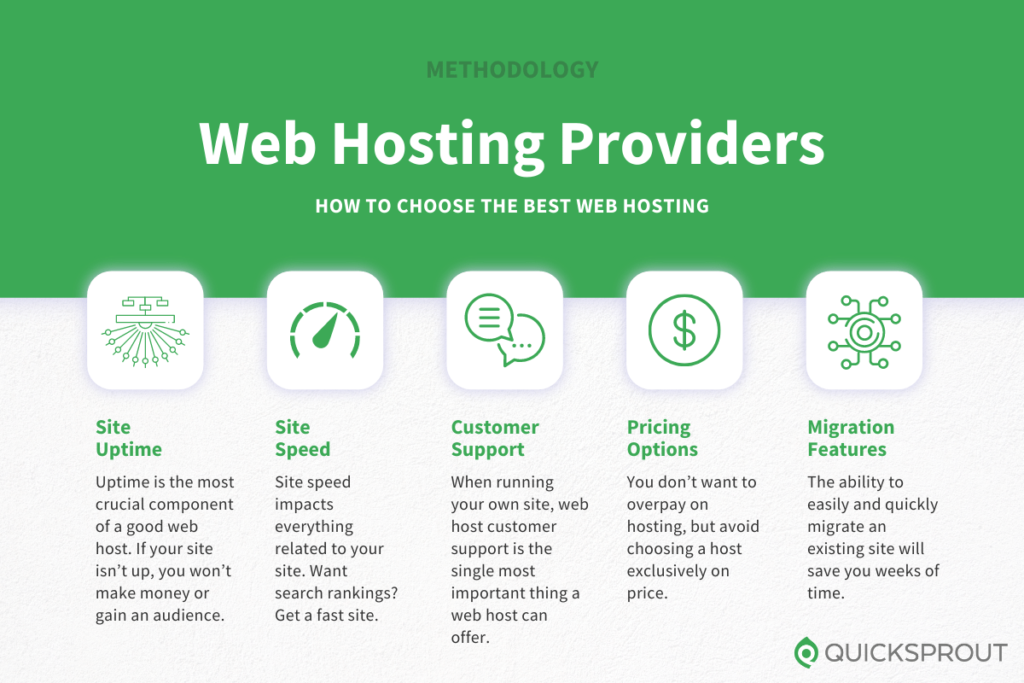
Hostinger – Best Overall
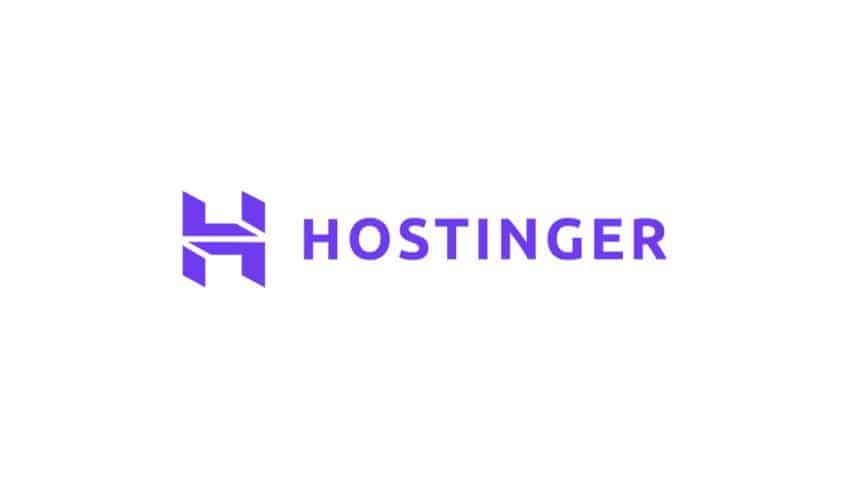
Hostinger keeps doing what most people actually want: fast shared hosting, extremely low promo pricing (often around $2.49/month for the first term), and features that other hosts keep behind higher tiers—like weekly backups and free SSL.
Unlike a lot of budget hosts, it doesn’t strip out backup tools. Lower plans get weekly backups, and when you upgrade you can turn on daily backups—exactly what you want if a plugin update breaks something.
The current Premium Web Hosting plan can run up to three sites, gives you 20 GB of SSD, and usually includes a free domain for the first year on annual terms. If you’re building multiple small sites, that alone makes it a better deal than most entry plans elsewhere.
When you outgrow shared hosting, Hostinger makes it easy to move up to cloud or VPS with more CPU/RAM, NVMe storage, and global data centers so you can host closer to your audience.
hPanel—Hostinger’s custom control panel—is a big reason beginners love it. It’s cleaner than cPanel, faster, and laid out in a way that makes sense. One-click installs for WordPress and other CMSs are baked in.
There’s also a WordPress management view inside hPanel to handle updates, plugins, backups, staging, and maintenance without hunting through menus.
Performance is solid right out of the gate thanks to LiteSpeed servers and LiteSpeed Cache for WordPress—so you get server-level caching without configuring a bunch of extras.
Hostinger backs its plans with a 99.9% uptime guarantee and 24/7 live chat.
Want to see everything it includes? Read our full Hostinger review here.
DreamHost – Best Value for Shared Hosting

DreamHost is still the shared host for people who want clear pricing, easy WordPress, and generous guarantees. It powers 1M+ sites and doesn’t play games with bandwidth or backups.
They’re one of the few to offer a 100% uptime guarantee plus an industry-leading 97-day money-back guarantee on shared hosting—so you actually have time to test traffic, plugins, and email.
Unmetered traffic and free daily backups on budget plans make DreamHost stand out—many low-cost competitors cut both of those.
Free domain privacy is included on eligible domains, which is another charge some hosts sneak in.
WordPress installs in one click, and you get automatic updates, a free site builder, and free automated migration for WordPress sites.
For first sites, the Shared Starter plan (commonly around $2.50–$3/month on promo for one site) is more than enough for blogs, personal sites, and local businesses that just need a trustworthy home.
Our full DreamHost review walks through all the tiers.
Support is in-house. You can add phone callbacks on some plans, but 24/7 chat and tickets plus a strong knowledge base cover most issues.
Sign up with DreamHost today if you want reliable, low-maintenance hosting at a fair price.
SiteGround – Best for Extra Speed and Security
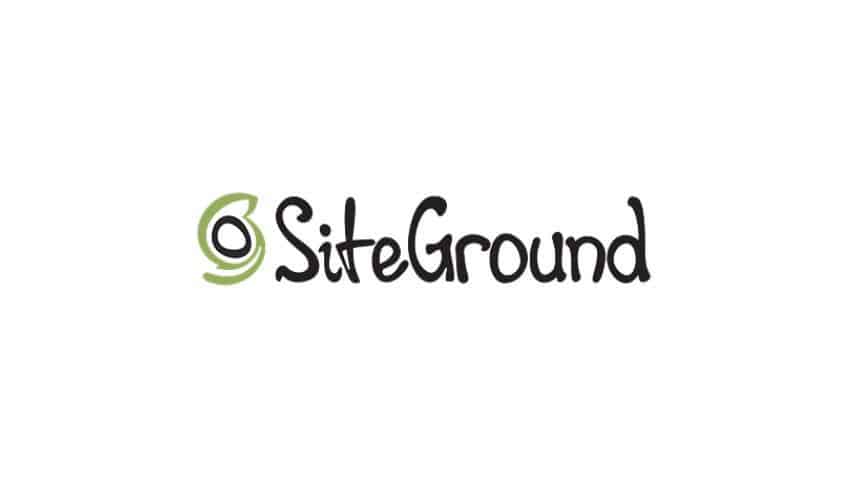
SiteGround is the pick when performance, security, and WordPress tooling matter more than shaving $1 off hosting. They frequently run intro promos and include free site transfer, so migrating from a slow host is easy.
They run on Google Cloud with fast SSD/NVMe storage and a global network, plus their own speed stack—caching, PHP optimization, and smart configuration—so sites feel snappy without tinkering.
Security is baked in: AI-powered bot protection, 24/7 server monitoring, auto-updates for WordPress, daily backups, and a web application firewall tuned for common attacks.
Every plan gives you one-click WordPress installs, the WP Starter flow, staging, and a custom control panel that’s much nicer than cPanel.
Pricing does go up after the first term, so always check the current promo vs. renewal rate before you commit.
If you want a host that’s fast on day one and stays secure without a stack of plugins, SiteGround is an easy yes.
See everything it includes in our full SiteGround review.
Bluehost – Best for New WordPress Websites
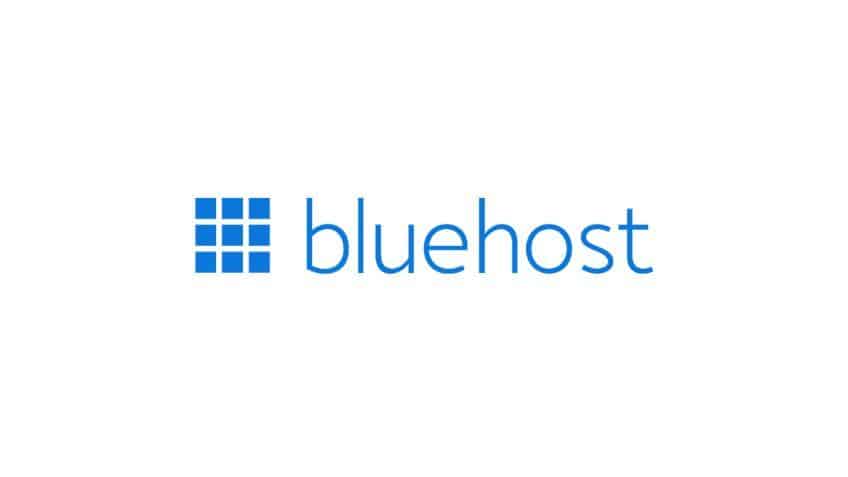
Bluehost is still one of the smoothest ways to launch a brand new WordPress site. It’s officially recommended by WordPress.org and the onboarding is built for people who don’t want to mess with databases or SSL.
Setup walks you through choosing a site type, connecting a domain, enabling free SSL, and launching your first pages. That’s why freelancers and first-time site owners keep picking it.
Support is there 24/7 by chat and phone, and access points are easy to find inside the dashboard.
WordPress installs in one click, and the marketplace makes it simple to add ecommerce, SEO tools, or other integrations.
Built-in SEO and marketing features help you start tracking and optimizing sooner instead of hunting for plugins.
The Basic plan promo price is usually under $5/month on a multi-year term. Like most shared hosts, expect renewals to be higher—so if the promo is good, lock in a longer term.
When your traffic grows, moving to managed WordPress, VPS, or dedicated servers is straightforward.
Non-WordPress installs work too, but take a bit more manual setup.
Try Bluehost today with a 30-day money-back guarantee.
Or read our full Bluehost hosting review to compare plans.
Scala Hosting – Best Upgrade from Shared Hosting
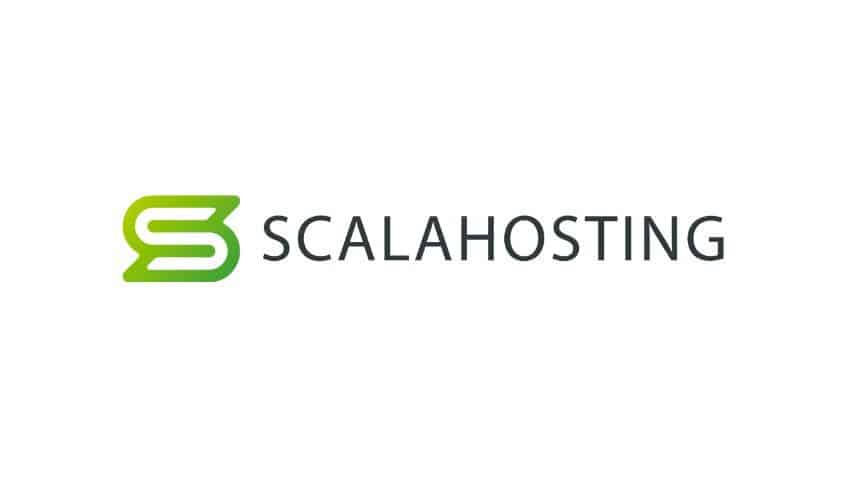
If your site is too busy for shared hosting—or you want to start on something stronger than shared—Scala Hosting is a smart middle ground.
They sell shared plans, but the sweet spot is the Entry Cloud plan. You get guaranteed resources, better stability than shared, and pricing that’s still accessible.
Entry Cloud typically includes two CPU cores and 2 GB RAM, so a traffic spike on another customer’s site won’t slow yours down.
NVMe storage, a dedicated IP, and offsite backups are included—nice wins for agencies and store owners.
Features you get out of the box:
- 24/7 SShield malware protection
- OpenLiteSpeed caching for better performance
- Dedicated IP address
- Priority support
- Dedicated firewall and account isolation
- Custom access roles for teammates
Put simply, Scala gives you cloud speed and control at a price most managed VPS providers can’t match. That’s why it’s a strong “level up” for blogs, membership sites, and stores.
Entry Cloud promos often start around $14.95/month on longer terms, with higher renewals and higher month-to-month costs—normal for this tier.
If you’re done with shared hosting limits, Scala Hosting’s Entry Cloud plan is one of the best-value upgrades in 2025.
HostGator – Best for Simple Websites
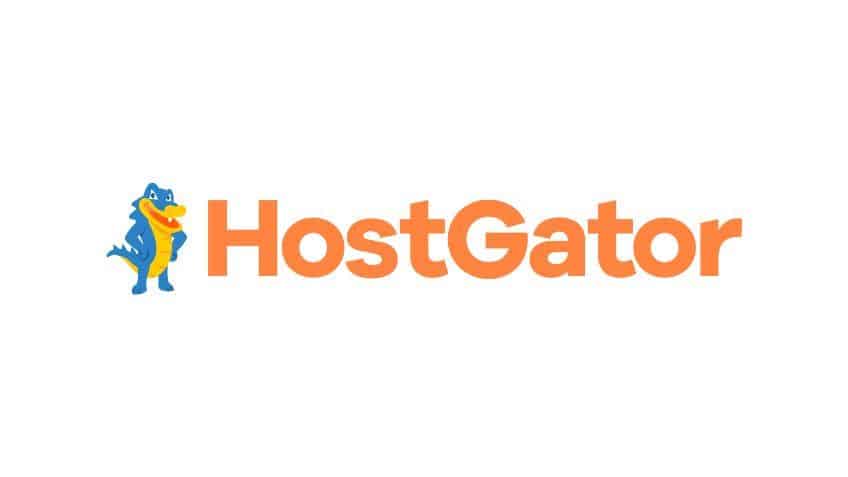
HostGator is great when you just need a business site, a local services page, or a portfolio online fast without learning hosting.
Every plan comes with a 30-day money-back guarantee, unmetered bandwidth, a free SSL, and a free domain for the first year.
For beginners, their knowledge base is genuinely useful—email setup, WordPress, domains, DNS, it’s all documented. And you can reach support 24/7 via chat, phone, or email.
You can add SEO or marketing tools if you don’t want to handle optimization manually, and upgrade to cloud, managed WP, VPS, or dedicated hosting later.
Hatchling promo pricing is usually under $3/month on long terms. Monthly billing is available but pricier—use the refund period to test first.
They advertise 99.9% uptime and may credit a month if they fall short—just check the SLA for your plan.
WP Engine – Best Managed WordPress Hosting
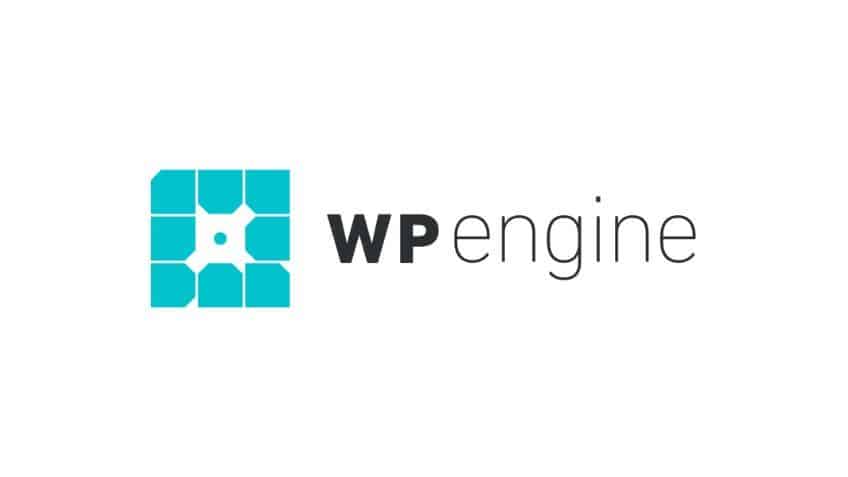
WP Engine is still the premium choice if you want a WordPress site that’s fast, secure, and maintained for you. It’s built specifically for WP, so everything—from caching to staging to backups—is tuned for it.
If you care about site speed, SEO, and never missing a security update, WP Engine is worth paying for.
Entry plans typically start around $25/month for one site, about 25,000 visits, and 10 GB storage. Annual billing often comes with a discount.
You get server-level caching, automated backups, malware scanning, one-click staging, and performance monitoring—no plugin hunting.
Because their platform is purpose-built, you get faster load times, proactive security, and a hosting environment that just doesn’t break easily.
WooCommerce hosting tiers add store-friendly performance and themes.
Support is excellent and WordPress-specific—no generic “ask your developer” answers.
Get the full details here: in-depth WP Engine review.
Short version: if you’re running a serious WordPress site in 2025 and don’t want to babysit hosting, WP Engine is one of the safest options.
Types of Web Hosting
Not sure what kind of hosting to buy? Start here. The right type depends on how much traffic you have now, how fast you’re growing, and how much control you want.
Here are the main categories you’ll see in 2025 and when they make sense.
- Understanding Different Types of Web Hosting
How To Find the Best Host for You
You don’t have to be technical to pick the right plan. You just need to know what actually matters before you buy.
Use the criteria below to match a hosting plan to your current site—and make sure it won’t choke when traffic grows.
Here’s what to look at first.
Let’s break it down.
Site Uptime
Uptime is non-negotiable. If your site isn’t reachable, nothing else matters. Aim for 99.9% uptime or better.
Most hosts advertise 99.9% and back it with an SLA, but the details matter. Some won’t count brief outages, some won’t accept third-party uptime reports, and some make you submit a claim within a few days.
Some hosts will credit a whole month if uptime drops below the guarantee, while others credit only for the actual downtime. Always read the SLA before you rely on it.
Site Speed
Speed affects rankings, conversions, and user experience. If your hosting stack is slow, every other optimization is fighting uphill. Fast hosting is worth paying for.
Pick a host that runs modern infrastructure: LiteSpeed or NGINX, NVMe SSDs, HTTP/2 or HTTP/3, built-in caching, and easy CDN integration.
You don’t need enterprise hardware on day one, but you do need a host that won’t slow down when mobile users and AI crawlers start hitting your pages at the same time.
Think of speed as the thing that becomes more important over time—so pick a host that won’t box you in later.
Customer Support
No one cares about support—until the site goes down, an SSL expires, or a plugin update white-screens the homepage.
Use trials and money-back windows to test support before you commit. Open a chat, send a ticket, ask about staging—see how fast and how accurately they respond.
Also check their knowledge base. Good hosts keep it updated for current PHP, current WordPress, and current control panels.
Traffic Volume
Your traffic dictates the minimum hosting you can get away with.
Under ~500 visitors/day (around 15,000/month)? A good shared plan is fine.
As you grow, make sure your plan includes:
- Modern PHP and MySQL/MariaDB versions
- Daily backups and one-click restores
- CDN support and edge caching
- Built-in SSL (HTTPS)
- Enough headroom for spikes, launches, and seasonal traffic
For sites expecting six-figure monthly visits or more, look at premium or managed platforms that handle caching, security, and scaling for you. You want to scale vertically and horizontally without migrating every year.
Under ~50,000 visits/month? Shared is okay. Over that? Move up before your audience feels the slowdown.
Price
Sticker price matters, but it’s not the whole story.
Most good hosts run promos between $2–$10/month for the first term. After that, renewals kick in at the normal rate.
If the price looks impossibly low, there’s a good chance they’re cutting corners on support or piling too many customers onto the same servers.
Migrating later costs time. Paying a couple dollars more for a reliable host now is cheaper than rebuilding a broken site later.
I ignore flashy “$1 hosting” deals and stick with providers that stay good after the promo ends.
Migration Features
If you’re moving from one host to another, migration can be the hardest part—especially for WordPress.
Manual migrations can eat hours, and a missed database change can break logins, forms, or image paths.
Choose a host that offers free or one-click WordPress migration. That alone can be the tiebreaker.
When two hosts look equal, pick the one that will handle the move for you.
Managed Hosting
Traditional hosting gives you cPanel or a similar dashboard and expects you to manage installs, SSL, backups, and performance yourself.
- You sign up and get an admin panel.
- You install apps, manage files, and update PHP.
- You can run WordPress, Magento, Joomla, or your own stack.
- You get full FTP/SFTP.
- It’s flexible but hands-on.
Managed hosting flips that. The provider handles core updates, backups, security, and performance tuning so you can work on content and revenue.
WP Engine is the example everyone knows—purpose-built dashboard, WP-focused tooling, and guardrails that keep you out of trouble.
Because the environment is optimized for WordPress, you get:
- Faster load times. You get server-level caching and an optimized stack without adding plugins.
- Better security and uptime. Managed providers patch WordPress-specific issues and monitor for attacks.
- Simpler maintenance. Backups, staging, and core updates are automated or one click.
The tradeoff is less low-level control. For most business sites, that’s a win—they want reliability, not root access.
If you’re only running a small personal site, shared hosting is still fine.
Why I Recommend Hostinger for New and Small Websites
For brand-new sites, side projects, and small local businesses, Hostinger gives you the best mix of price, speed, and ease of use.
- Super-affordable plans. Long-term promos usually land around $2–$3/month and then renew closer to $10–$11/month on Premium.
- Exceptionally easy UI. hPanel is genuinely nicer than old-school cPanel—clean, fast, organized.
- Reliable hosting. It stays up, which is all most small sites need.
- Migration that actually works. Moving a WordPress site over is fast and doesn’t break media or URLs.
- Low support friction. I don’t have to contact them often—which is exactly what I want from shared hosting.
There are a couple things to watch:
- Month-to-month is pricier. If you don’t prepay, you’ll pay more, and sometimes there’s a setup fee.
- Renewals go up. Like almost every host, the second term costs more. Plan for it.
But overall, for personal sites, blogs, simple business sites, and early-stage projects, Hostinger is the 2025 budget host I’d start with. If I needed more horsepower from day one—for example, a store that’s already getting traffic—I’d jump straight to WP Engine.
Why I Recommend WP Engine for Growing Businesses
When the site is making money, ads are running, or you’re reporting to stakeholders, WP Engine is the safer choice. Plans start around $25/month—not “cheap,” but right for production sites.
I’ve seen WP Engine be overkill for small blogs—but absolutely the right call for fast-growing WordPress sites.
Here’s why:
- Pro-grade platform. Their teams know WordPress deeply—migrations, performance, security, plugin conflicts.
- Excellent uptime. Platform issues are rare. And if something breaks, they help you find the root cause.
- Full toolset. Staging, backups, malware scans, caching, edge options, SSL—all there.
- Strong support. During migrations and traffic spikes, communication is clear and fast.
For high-revenue or high-traffic WordPress sites, I trust WP Engine. I’d rather pay a bit more for stability than lose a weekend to a hosting issue.
The only drawback is price—as traffic and features go up, so does the bill. If you’re in pure bootstrapping mode, start with shared. If reliability matters more than saving $10/month, go with WP Engine.
The Top Web Hosting Providers in 2025
There isn’t one “best” host for everyone. That’s why this list ranges from low-cost shared plans to premium managed WordPress. The right host is the one that matches where your site is today and where it will be in 12–24 months.
Start with uptime, speed, and support. Then make sure the host gives you an easy upgrade path so you don’t have to move when traffic finally hits.
The best web hosting companies in 2025 are:
- Hostinger – Best overall
- DreamHost – Best value for shared hosting
- SiteGround – Best for extra speed and security
- Bluehost – Best for new WordPress websites
- Scala Hosting – Best upgrade from shared hosting
- HostGator – Best for simple websites
- WP Engine – Best managed WordPress hosting
